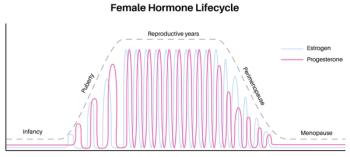
New PET Imaging Technique Detects Early Cognitive Loss
LOS ANGELES -- The telltale plaques and tangles of even mild cognitive impairment can be detected by brain PET scans augmented by a new chemical marker, researchers here reported.
LOS ANGELES, Dec. 20 -- The telltale plaques and tangles of even mild cognitive impairment can be detected by brain PET scans augmented by a new chemical marker, researchers reported.
A PET scan aided by a small-molecule chemical marker (FDDNP) that binds to Alzheimer's amyloid plaques and neurofibrillary tangles distinguished patients with mild cognitive impairment from those with Alzheimer's disease or from normals, UCLA investigators reported in the Dec. 21 issue of the New England Journal of Medicine.
"This is the first time this pattern of plaque and tangle accumulations has been tracked in living humans over time," said Gary Small, M.D., and colleagues.
Noninvasive methods of detecting these abnormal proteins are potentially useful in developing markers for drug development aimed at blocking amyloid build-up and for diagnostics, the researchers added.
The study enrolled 83 volunteers with self-reported memory problems who had undergone neurologic and psychiatric studies and evaluation by PET scanning.
On the basis of cognitive testing, 25 volunteers were classified as having Alzheimer's disease, 28 as having mild cognitive impairment, and 30 as healthy controls.
The PET study was done after IV injection of the FDDNP molecule (2-(1-{6-[(2-[F-18] fluoroethyl) (methyl)amino]-2-naphthyl}ethylidene)malononitrile), a molecule that binds to plaques and tangles in vitro.
All volunteers also underwent PET with a more conventional marker, FDG injection (2-deoxy-2-[F-18] fluoro-D-glucose), while 72 individuals had magnetic resonance imaging.
Global values for FDDNP-PET binding (average of the values for the temporal, parietal, posterior cingulate, and frontal regions) were lower in the control group than in the group with mild cognitive impairment (P
Further studies are needed to determine whether combining several imaging techniques will improve diagnostic accuracy and whether the benefits of using multiple scans outweigh the added costs, Dr. Small said.
Some methodological issues require comment, the researchers said. Only about 10% of the volunteers initially screened were included in the study, so that the sample may not have represented the populations studied.
Also, the sample of motivated, highly educated, physically healthy volunteers concerned about age-related memory problems could have resulted in higher values for FDDNP-PET binding, and concern about memory problems could have been a subtle sign of presymptomatic disease in some of the controls.
Despite this, the researchers said, the binding values in the control groups were significantly lower than those in the two other groups.
These findings support the potential usefulness of FDDNP-PET in the development of surrogate markers for future drugs aimed at blocking the amyloid buildup characteristic of Alzheimer's disease and eventually as a diagnostic tool, the researchers said. Nevertheless, they noted that the study does not provide definitive evidence of a basis for such uses.
Because FDDNP-PET binding differentiates among clinical entities with varying severity of cognitive decline, it may eventually prove useful in the early detection of neurodegeneration, they concluded.
UCLA owns a U.S. patent, "Methods for Labeling "-Amyloid Plaques and Neurofibrillary Tangles," that uses the approach outlined in this article that has been licensed to Siemens.
Newsletter
Enhance your clinical practice with the Patient Care newsletter, offering the latest evidence-based guidelines, diagnostic insights, and treatment strategies for primary care physicians.

























































































































































































































































































